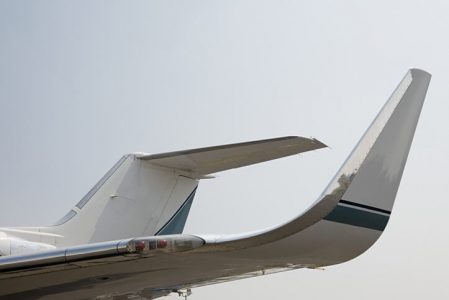Aircraft Wing Technology and Performance Changes
Gone are the days of static wings. Airbus is leading the charge with their new “morphing” aircraft wing technology, set to debut in early 2024 as part of their Wing of Tomorrow program. The wing, tested on a Citation VII, will adapt its shape, span, and surface mid-flight, maximizing efficiency and reducing carbon emissions.
The testing will determine the best combination of available technologies for active control, with options including gust sensors, pop-up spoilers, multifunctional trailing edges, and semi-aeroelastic hinges. The results are expected to revolutionize aircraft performance across all propulsion systems and configurations.
Aircraft Wing History
Aircraft wings are one of the most critical components of an airplane, enabling it to lift off the ground and soar through the sky. Without wings, flight would be impossible. Throughout history, airplane wings have undergone significant changes in design, material, manufacturing, and technology, leading to the development of the wings we see today.
The Wright Brothers, credited with inventing the first successful airplane, used a biplane design with two wings placed one above the other. The wings were made of wooden spars and fabric, which were lightweight and flexible enough to bend during flight. This design was later refined with monoplanes that had just one wing and used aluminum and other lightweight metals instead of wood.
In the 1930s and 1940s, aircraft designers started to experiment with different wing designs, including variable geometry wings, swept wings, and delta wings. Variable geometry wings were designed to change shape during flight, allowing the aircraft to fly at different speeds and altitudes. Swept wings were angled backward, which reduced drag and enabled aircraft to fly faster. Delta wings were triangle-shaped and provided improved maneuverability at high speeds.
The development of new materials such as carbon fiber and composites in the 1970s and 1980s led to even more significant changes in wing design. These materials were much stronger and lighter than previous materials, allowing for thinner and more efficient wings.
Check Your Wings Before Taking Flight
No matter the type of wing, there are steps pilots can take during preflight to ensure their wings and flight are safe, including:
- Inspect Lift Control Surfaces: Inspect the lift control surfaces, such as flaps, ailerons, and wingtips to ensure they are in good working condition and not damaged or stuck.
- Check Overall Structural Integrity of Wings’ Exterior: Carefully inspect each wing’s exterior to ensure that it is free of any cracks, dents, or other damage that may compromise the wing’s structural integrity.
- Verify Proper Functioning of Wing Lights: Verify that all wing lights, such as navigation, strobe, and landing lights, are functioning correctly.
- Inspect Flaps: Inspect the flaps to ensure they are extending and retracting smoothly and without any unusual noise.
- Test De-icing Systems (if applicable): Test de-icing systems, including boots, electric heat, or chemical de-icing fluids, if applicable, to ensure they are functioning correctly.
If any of these areas are compromised or neglected, the pilot risks potential engine failure, loss of control of the aircraft, or an emergency landing, which could lead to significant injury or loss of life. As such, it is essential to prioritize the pre-flight inspection of the aircraft wings to ensure safety.
Conclusion
There’s no doubt that Airbus’ Wing of Tomorrow program is an ambitious achievement, potentially setting the tone for advanced technology in the aviation sector. This groundbreaking advancement stands to revolutionize aircraft performance, making airplanes around the world more efficient and environmentally friendly. While testing is still underway, this technology has already been applauded as a step towards airline sustainability and underscores the shared commitment to deploy creative solutions at scale.
RELATED READING
RELATED CTS TRAINING










